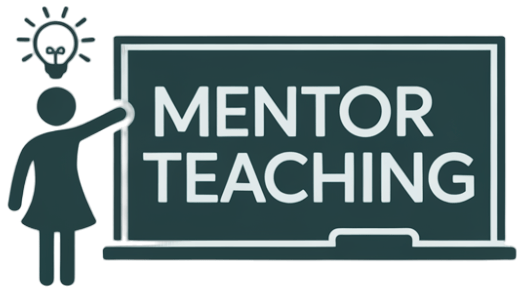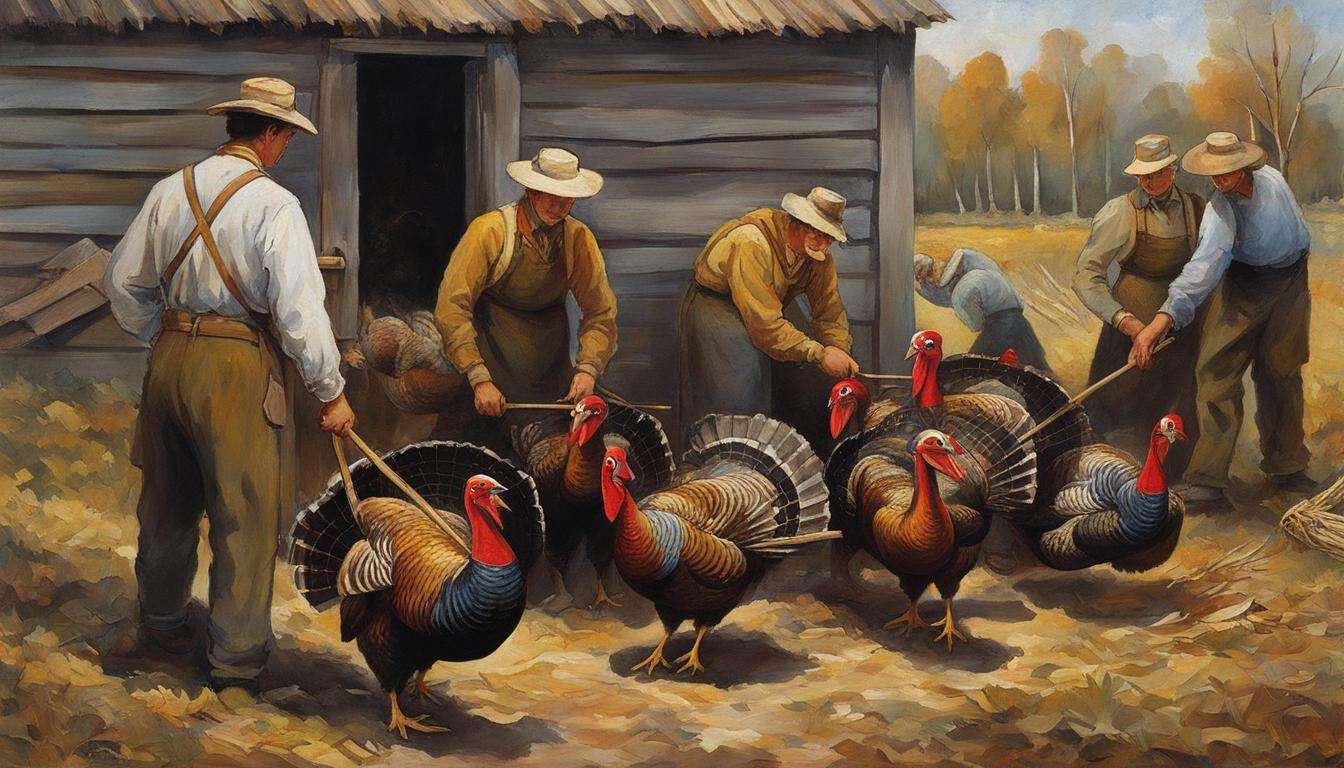Are you looking for an exciting and educational lesson plan that will capture your students’ attention? Look no further! Our comprehensive How to Catch a Turkey lesson plan is perfect for elementary teachers who want to engage their students with fun and interactive activities.
In this lesson plan, we will explore various turkey catching activities and introduce students to the book “How to Catch a Turkey” by Adam Wallace. This delightful story follows a turkey that runs loose in a school the day before a Thanksgiving play. Students will join in the adventure as they try to catch the turkey and ensure the show goes on.
Our lesson plan is designed specifically for elementary students and includes teaching ideas, resources, and free printables to enhance the learning experience. Through interactive read aloud sessions, students will not only learn about turkeys but also develop essential reading comprehension skills and engage in social emotional learning.
We have carefully curated a list of lesson plan ideas, including activities that focus on analyzing setting, cause and effect, rhyme, rhythm, repetition, sequencing, and summarizing. Teachers will also find suggestions for grammar, vocabulary, and word study activities to enhance students’ language skills.
Whether you’re a seasoned teacher or new to the profession, our How to Catch a Turkey lesson plan will provide you with all the resources you need to deliver a fun and educational experience for your students. So, get ready to embark on a turkey-catching adventure that will keep your students engaged and excited!
Engage Your Students with How to Catch a Turkey Lesson Plans & Activities
In this section, you will find step-by-step instructions for engaging your students with How to Catch a Turkey lesson plans and activities. These resources will help you create an interactive and educational experience for your students while teaching them essential skills.
Lesson Plan Steps
- Read a Summary of the Book
- Explore Teaching Ideas for Reading Comprehension Strategies, Grammar Topics, and Social Emotional Learning Skills
- Utilize the Printable Book Companion
Reading a Summary of the Book
Start by reading a summary of the book “How to Catch a Turkey” by Adam Wallace. This will give your students an overview of the story and the task of catching a turkey. You can use the book as a springboard for further discussions and activities.
Teaching Ideas for Reading Comprehension Strategies, Grammar Topics, and Social Emotional Learning Skills
Next, explore teaching ideas for reading comprehension strategies, grammar topics, and social emotional learning skills. You can incorporate these ideas into your lessons to enhance your students’ understanding and engagement with the story. For example, you can discuss the characters’ motivations and feelings, analyze the story’s plot structure, and explore the use of descriptive language in the book.
Utilize the Printable Book Companion
To further support your lesson plans, utilize the printable book companion for “How to Catch a Turkey.” This companion includes reading comprehension questions, writing prompts, and no-prep extension activities. The questions and prompts will encourage your students to think critically about the book, while the extension activities will provide opportunities for creativity and hands-on learning.
| Resource | Description |
|---|---|
| Reading Comprehension Questions | A set of questions that can be used to assess your students’ understanding of the book and its themes. |
| Writing Prompts | Thought-provoking writing prompts that will inspire your students to express their ideas and opinions about the story. |
| No-Prep Extension Activities | Engaging activities that complement the book and provide opportunities for further exploration and learning. |
With these resources at your disposal, you can easily plan engaging lessons that will captivate your students’ interest and teach them valuable skills. Whether you’re focusing on reading comprehension, grammar, or social emotional learning, these lesson plans and activities will make teaching “How to Catch a Turkey” a breeze.
How to Catch a Turkey Lesson Plan Ideas
In this section, we will provide you with specific lesson plan ideas for teaching How to Catch a Turkey. These ideas will help you engage your students and enhance their understanding of the story. Let’s dive in!
Vocabulary and Word Study Activities
Incorporate vocabulary and word study activities into your lesson plan to expand your students’ knowledge and language skills. Here are some ideas:
- Word Sort: Have students classify words from the story into categories such as nouns, verbs, adjectives, or related to Thanksgiving.
- Dictionary Detective: Encourage students to look up unfamiliar words and create their own kid-friendly definitions.
- Context Clues: Guide students to use context clues to determine the meaning of unfamiliar words in the story.
Comprehension Skills and Strategies
Develop your students’ comprehension skills through targeted activities and strategies. Here are some suggestions:
- Sequencing: Ask students to place events from the story in the correct order using a graphic organizer or a timeline.
- Cause and Effect: Help students identify cause and effect relationships within the story and discuss their significance.
- Summarizing: Have students summarize the main events and key details of the story in their own words.
Social Emotional Learning Lessons
Explore social emotional learning (SEL) lessons with your students using How to Catch a Turkey. Use the story as a springboard for discussions about emotions, empathy, and problem-solving. Here are some SEL activities:
- Emotion Exploration: Have students identify the different emotions experienced by the characters in the story and discuss how they would feel in similar situations.
- Problem-Solving: Engage students in problem-solving discussions, encouraging them to come up with creative solutions to catch the turkey safely.
- Building Empathy: Prompt students to put themselves in the shoes of the characters and reflect on their own empathy towards animals and others.
Turkey Catching Games and Activities
Add excitement and engagement to your lesson plan with turkey catching games and activities. Here are some interactive ideas:
- Turkey Toss: Set up a target and have students toss a beanbag or soft object to “catch” the turkey.
- Feather Relay Race: Divide students into teams and have them race to collect feathers as a team, simulating a turkey catching mission.
- Hide-and-Seek Turkey: Hide turkey cutouts around the classroom or outdoor area for students to find, encouraging observation and discovery.
These lesson plan ideas provide a solid foundation for teaching How to Catch a Turkey while engaging and inspiring your students. Use the activities as they are or tailor them to suit your classroom needs. Let’s make learning fun!
About the Book How to Catch a Turkey
The book “How to Catch a Turkey” by Adam Wallace and Andy Elkerton is a hilariously zany children’s picture book that will captivate young readers. The storyline revolves around a turkey that runs loose in a school the day before a Thanksgiving play. The students embark on an exciting adventure as they try to catch the turkey to ensure the show can go on.
This book incorporates STEAM (Science, Technology, Engineering, Arts, and Math) concepts, making it both entertaining and educational for children. Through the engaging story, kids can learn about cooperation, problem-solving, and perseverance.
About the Author and Illustrator
Adam Wallace is a renowned children’s book author who has written several popular picture books. His humorous and imaginative storytelling style has made him a favorite among young readers.
Andy Elkerton is a talented illustrator known for his vibrant and expressive illustrations. With his unique style, he brings the characters and the story of “How to Catch a Turkey” to life.
Genre and Length
“How to Catch a Turkey” falls under the genre of children’s fiction. The book is suitable for children aged 4 to 8 years old and has a total length of 32 pages, making it a perfect choice for read-aloud sessions and independent reading.
Gobble Up Some Fun with How to Catch a Turkey Activities
This section highlights a variety of engaging activities based on the book “How to Catch a Turkey” that will not only entertain students but also enhance their learning experience. These activities cover different aspects of the story, promoting reading comprehension, critical thinking, and creativity.
1. Matching Rhyme Pairs
Encourage students to match rhyming words from the book. This activity improves phonological awareness and vocabulary skills. Here are a few examples:
| Word from the Book | Rhyming Word |
|---|---|
| Gobble | Wobble |
| School | Cool |
| Run | Sun |
2. Sequencing the Story
Have students put the events of the story in the correct order. This activity improves reading comprehension and narrative skills. Provide students with sentence strips or story cards and ask them to arrange them in the correct sequence.
3. Identifying Character Traits
Engage students in discussing the character traits of the turkey or other characters from the book. Encourage them to provide evidence from the text to support their descriptions. This activity helps students develop their analytical thinking and character analysis skills.
4. Parts of Speech Madness
Invite students to identify different parts of speech from the book, such as nouns, verbs, adjectives, and adverbs. Provide a list of sentences or short excerpts from the story and ask students to highlight or categorize the words according to their respective parts of speech.
5. Mini Booklets and Writing Templates
Provide students with mini booklets or writing templates inspired by the book, allowing them to retell the story or create their own version. These activities improve reading comprehension, writing skills, and creativity.
6. STEM Activities
Integrate STEM (Science, Technology, Engineering, and Mathematics) into the lesson by incorporating turkey-related projects. Here are some fun STEM activity ideas:
- Design a Turkey as a School Mascot
- Engage in Fine Motor Skills Activities to Build a Turkey
- Design a Hide-and-Seek Turkey Map
- Construct a Turkey Trap Using Recycled Materials
These activities foster critical thinking, problem-solving skills, and creativity in students.
In the next section, we will explore additional resources and reviews related to “How to Catch a Turkey,” providing teachers with valuable recommendations and insights to enhance their teaching experience.
Additional Resources and Reviews
This section provides additional resources related to How to Catch a Turkey, including the option to buy the book, digital downloads, and other related resources from the same author. It also mentions reviews of the book and thanks the customers for their support. Teachers can explore these additional resources to supplement their Turkey catching lesson plans.
For teachers who want to dive deeper into the world of turkey catching, here are some recommended resources:
- How to Catch a Turkey book by Adam Wallace – Purchase the book to enhance your lesson plan and engage readers with this fun and adventurous story. Available at major bookstores and online retailers.
- Digital Downloads – Access additional educational materials, worksheets, and activities related to How to Catch a Turkey. These resources will further enrich your lesson plans and provide students with interactive learning experiences.
- Related Resources by the Author – Explore other books and educational resources by Adam Wallace that can complement the turkey catching theme. These resources cover a range of topics and offer opportunities for cross-curricular connections.
Reviews
| Review Source | Rating | Review Quote |
|---|---|---|
| Goodreads | 4.5/5 | “A delightful and engaging book that captivated my students. They couldn’t wait to catch their own turkeys after reading this hilarious story!” |
| Amazon | 5/5 | “This book is a hit with my students! It’s perfect for Thanksgiving-themed lessons and provides a great opportunity for teaching important vocabulary and literacy skills.” |
We would also like to express our gratitude to all the customers who have supported us and used our resources. Your feedback and reviews have been invaluable in helping us create high-quality educational materials. We appreciate your continued support and are committed to providing you and your students with the best resources for learning and fun.
Conclusion
In conclusion, this article has provided elementary teachers with a comprehensive turkey lesson plan for kids. By emphasizing the book “How to Catch a Turkey” by Adam Wallace, teachers can engage students in a fun and interactive way while teaching them essential skills. The lesson plan includes various activities that promote reading comprehension, social emotional learning, and grammar and vocabulary development. It also explores word study activities and provides resources for additional support.
Through the lesson plan, students will learn not only about turkey biology and behavior but also turkey catching techniques. These activities encourage critical thinking, problem-solving, and creativity. By participating in hands-on experiences such as designing turkey traps and creating hide-and-seek turkey maps, students will deepen their understanding of the story and enhance their STEM skills.
Teachers can utilize the provided resources, including printable book companions, writing templates, and mini booklets, to create a comprehensive and engaging learning experience. By incorporating these activities into their curriculum, teachers can ensure that their students not only enjoy the reading process but also develop important literacy skills.
Overall, the turkey lesson plan and activities outlined in this article offer an excellent opportunity for elementary teachers to engage their students in an exciting and educational journey, teaching them about turkeys and developing their academic and critical thinking skills in the process. By applying these strategies, teachers will create a memorable learning experience that will inspire their students’ curiosity and love for reading.




